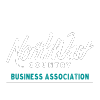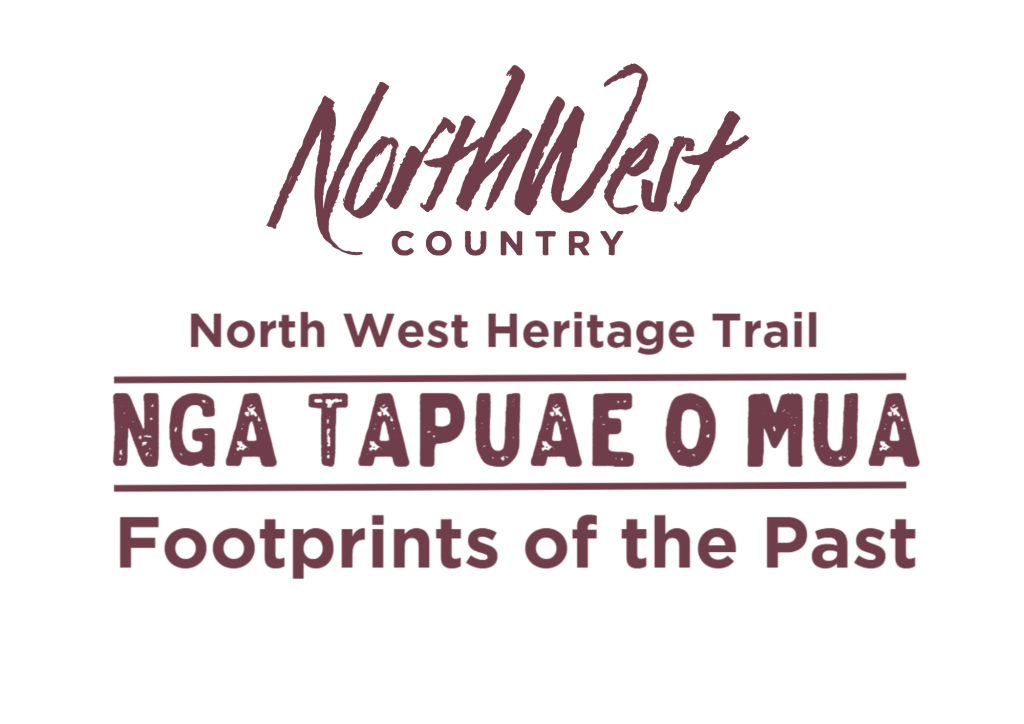
KO TE MĀTAURANGA
Nā te korero pakiwaitara, te kōrero pūrakau, te waiata, te taki o ō rātou pepeha ngā tāngata Māori i whakaako i ō rātou tāhuhu kōrero. Hoinei te taonga tuku iho, mehemea horekau he reo tuhi tō te iwi. I te taenga mai o te Pākehā, i kawe mai ngā mihinare i te tuhinga mō te Paipera Tapu. I te matekai ngā tupuna ki te whiwhi i te māramatanga o ngā tuhinga katoa. I takohatia tekau ēka whenua e Otene Kikokiko mā kia tupua te mātauranga, hei hora manatika.
EDUCATION
Māori didn’t have a written language. They learned their history by way of stories, songs, and the recitation of their family trees. When Missionaries arrived, they taught Māori to read and write so that they could read the bible. Otene Kikokiko donated 10 acres for the purposes of Education, a church and Justice. The courthouse once stood here. The school is at the top of the hill and the Police Station is also situated here. The Government also chose to sell sections to private owners.
Mātauranga – Education
In traditional Māori society a system of knowledge transfer and skills acquisition had been refined over the centuries. Group learning and co-operative teaching was the norm. Parents, uncles, aunts, and grandparents all played important roles. In an oral culture, waiata (songs), whakataukī (proverbs), kōrero tawhito (history), pūrākau (stories) and whakapapa (genealogy) were important educational tools for teaching history, values and models of behaviour. There was also the whare wānanga (house of learning) which was a traditional educational institution reserved for a select few with the proper chiefly lineage.

Verses 10 to 12 of Kenehi (Genesis) in Te Reo (Māori) in the first known print of the Bible in Māori in Aotearoa
Click on the link to see Kaipara College students kapa haka: Kaipara College – Ngā Taniwha o Kaipara | Māori Television
With the arrival of missionaries came the establishment of missionary schools from 1822 onwards. Māori became increasingly interested in learning to read and write. While the missionaries saw literacy as the key to the scriptures, Māori were more interested in understanding the new European world with its tall sailing ships, firearms, and iron tools. It is estimated that by the early half of the 1840s half of the adult Māori population was able to read and write to some extent. The European rate of literacy here was much lower.
In 1864 John Rogan was appointed as the new Resident Magistrate in Te Awaroa (Helensville) and later that year he appointed eight Ngati Whātua assessors to assist him in making by-laws for their district. Te Taou chief Te Otene Kikokiko responded by offering to give land for the purposes of Justice, a church and Education. This land covered ten acres and ran from the Kaipara River to the top of the hill (Garfield Road). The gift was given with the noblest of intentions but within a year, when land sales brought dissension, the Tohunga chief was ridiculed by his equals for his foolishness in giving land to the Queen. Mr Rogan sensed Te Otene’s position and as he knew Māori custom, he made the chief a return present of £10 for the gift of the reserve. The Government erected a courthouse and promised a school would be provided on a portion of the ten-acre block.
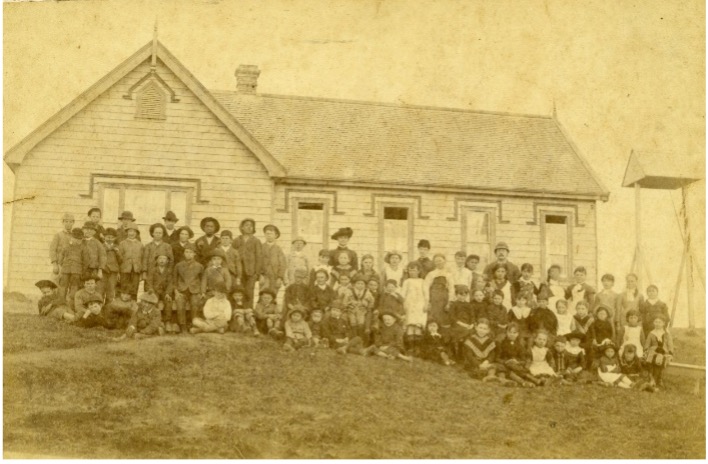
Helensville Primary School 1883– courtesy of Helensville Museum
Private education had been available to local European children in the Kaipara area before the Government opened the first school in Te Awaroa in 1877. By this time Māori parents had already petitioned twice for a Māori school to be built on the ten-acre block, but Judge Symonds had advised them to send their sons to one of the existing schools in Oruawharo, Orakei or Three Kings. Once the school was established at the top of the ten-acre block, it grew quickly and had 89 pupils by 1882. In 1911 a Manual Block was built which also provided evening classes for residents, and after a long struggle with authorities a separate High School was built in Rautawhiri Road in 1929.
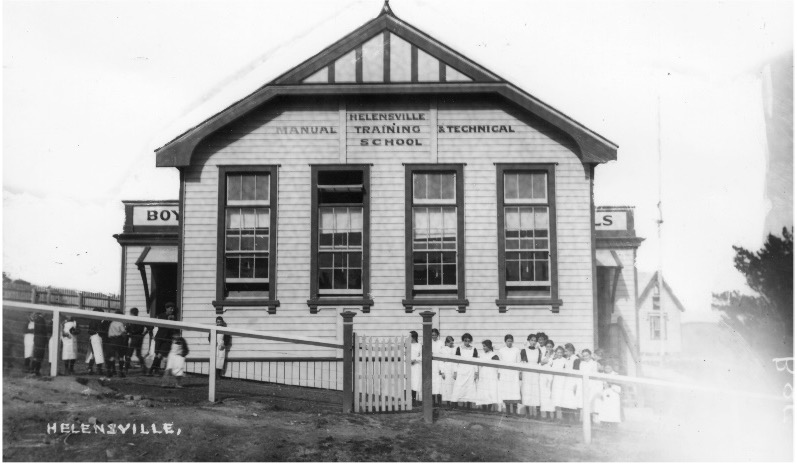
Manual Building – courtesy of Helensville Museum
In 1979, when the Courthouse was no longer required, the Department of Justice recognised that the gifted land should be returned to the descendants of the former owners. In 2011 when the Wai 312 Claim was settled the recreation reserve of the 10-acre block was returned to iwi.
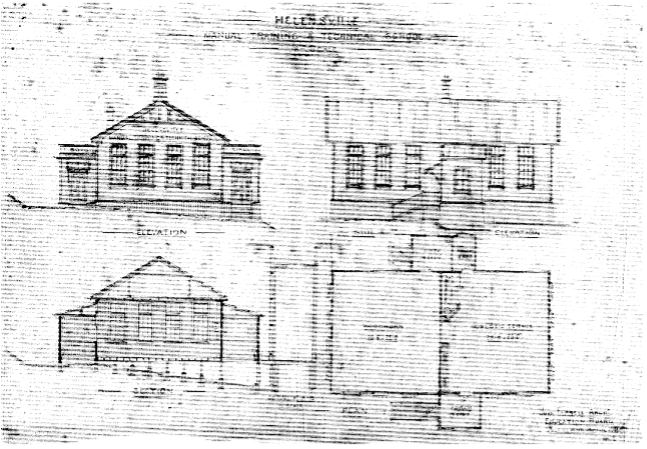
Manual Building Plans – courtesy of Helensville Museum
The remaining parts of the ten-acre block are occupied by the Helensville Primary School, the Railway, Police, Auckland Council and Telecom. Part of the block has been sold and is used by St. John’s Ambulance Service, the NZ Fire Service, and a service station as well as private houses.
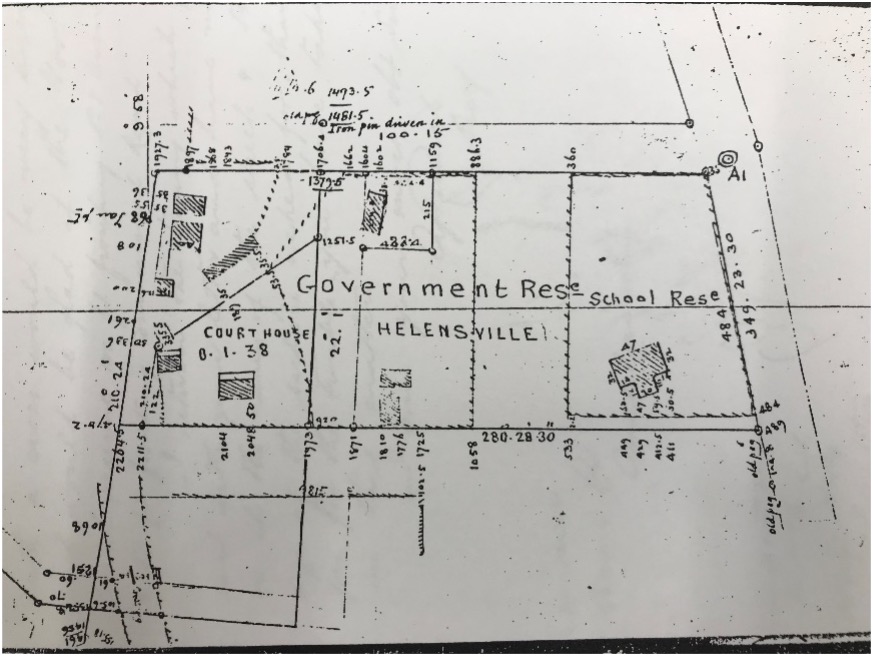
1880 survey of 10-acre block – from Helensville Heritage Study 1993
Further reading from Papers Past:
Raising the Flag 9-11-1901 (see down page)
People & Their Stories…
Charles Staniland West
Daniel Metge
Early teachers at Helensville Primary School did not stay long. There were seven teachers in the first six years, three women and four men. Stability came with headmaster Daniel Metge who served from 1883 to 1900. Metge was born in Ireland. He was a keen English scholar and for nearly 18 years governed the school and guided the future of a whole generation of the district. During this time, nine of the ten Metge children were born. The youngest, (C L Metge) was born a few months after the family moved to Auckland in 1902, where Mr Metge had been appointed headmaster to Newton East School, a position he held until his retirement.
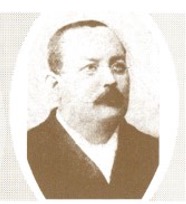
Daniel Metge – from Do You Remember Helensville Schools Centennial 1877-1977
“Who among the older ex-pupils does not remember his rather rotund figure, his thick glasses, his deep rolling voice, and his jokes (rather grim sometimes). None of his old pupils can forget his strict sense of justice, his geniality, nor his anger, which was at times monumental. He was indeed an impressive man, and in many ways beyond his time in educational methods. – 1938 booklet”.[1]
When Mr Metge died in 1931, he was buried in the Helensville Cemetery as was his wish. His wife Julia, one daughter, Gertrude, and two sons, Norman and Algernon lay there also.
[1] Do You Remember, Helensville Schools Centenary Booklet
